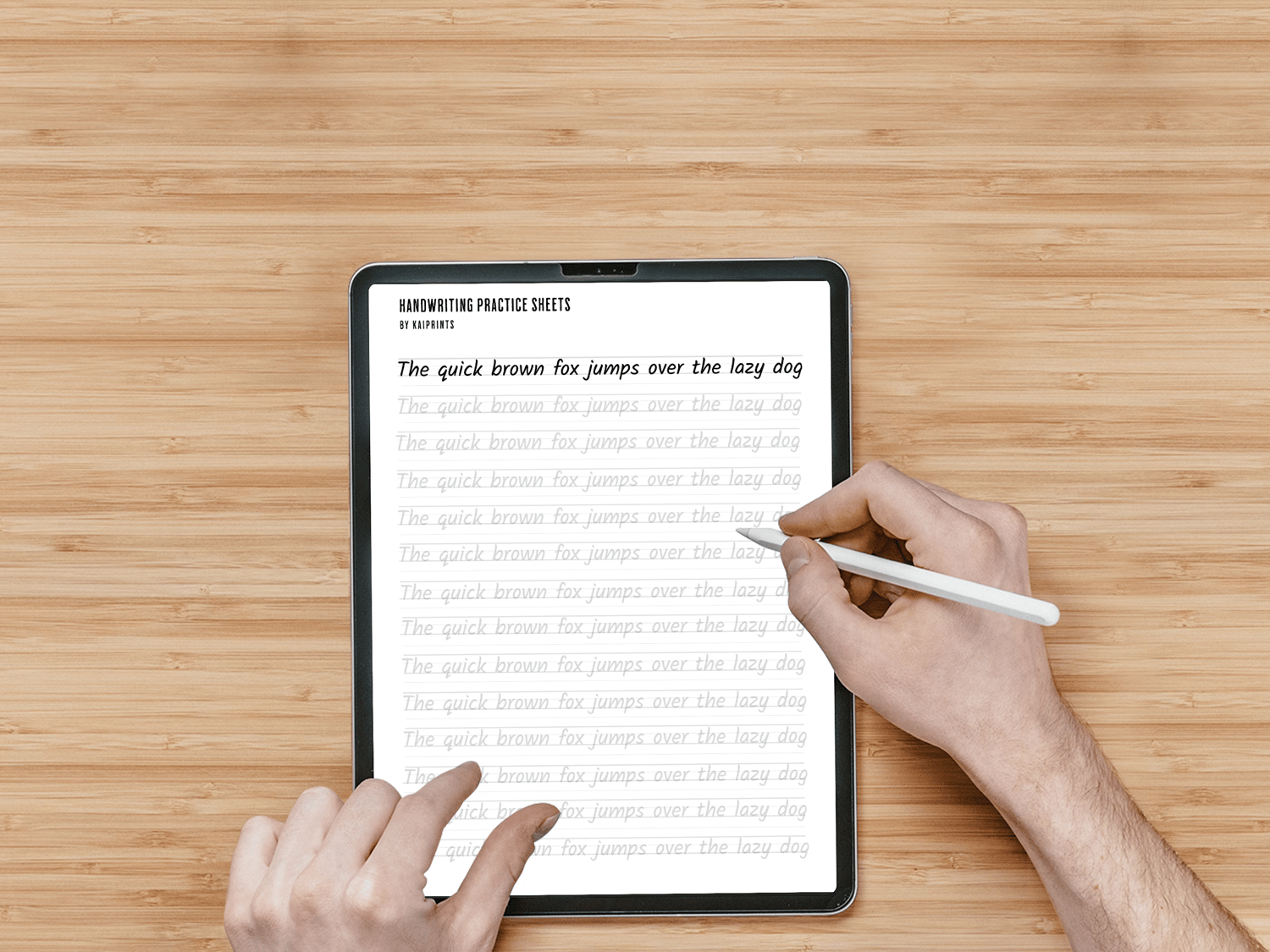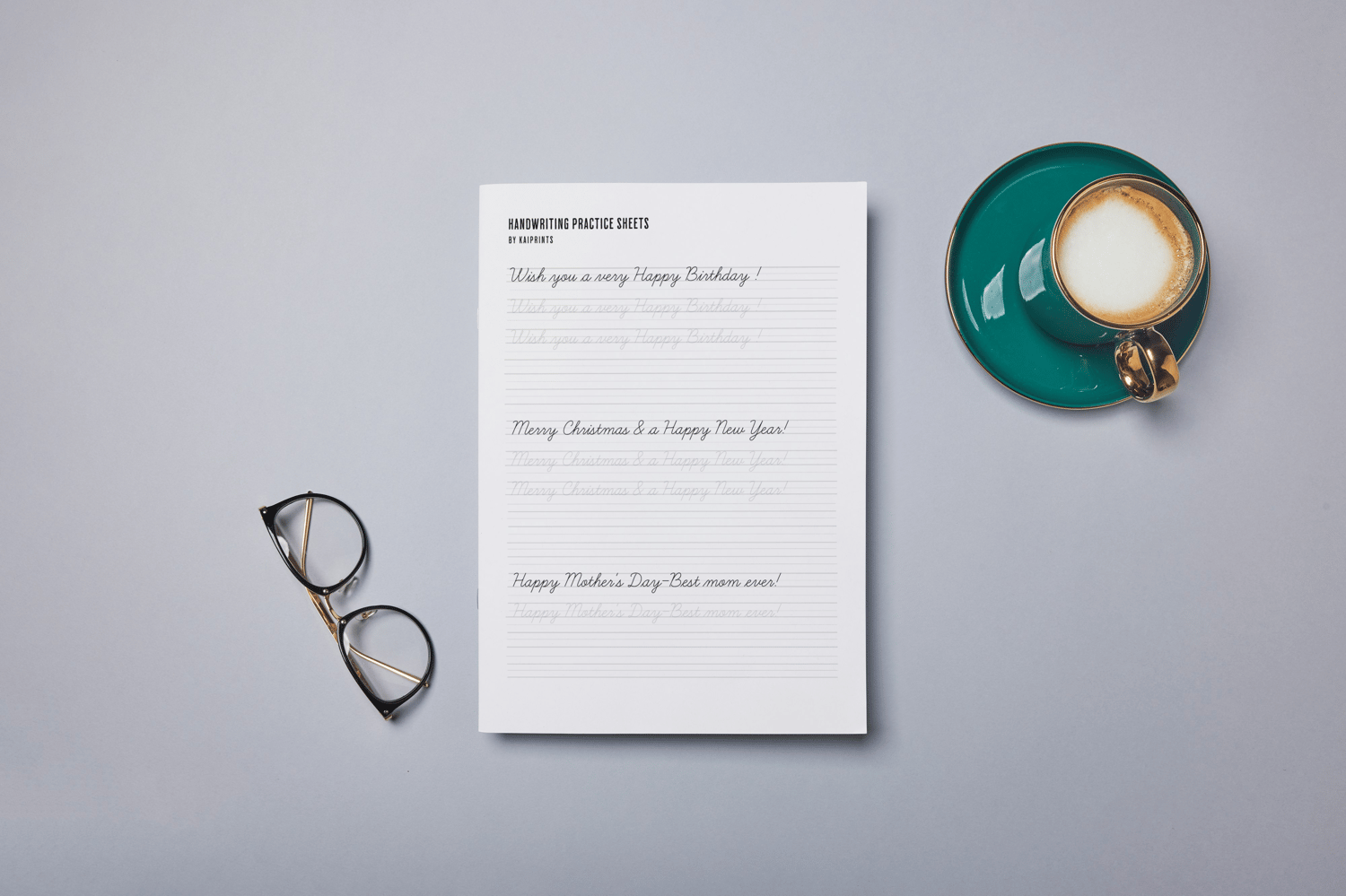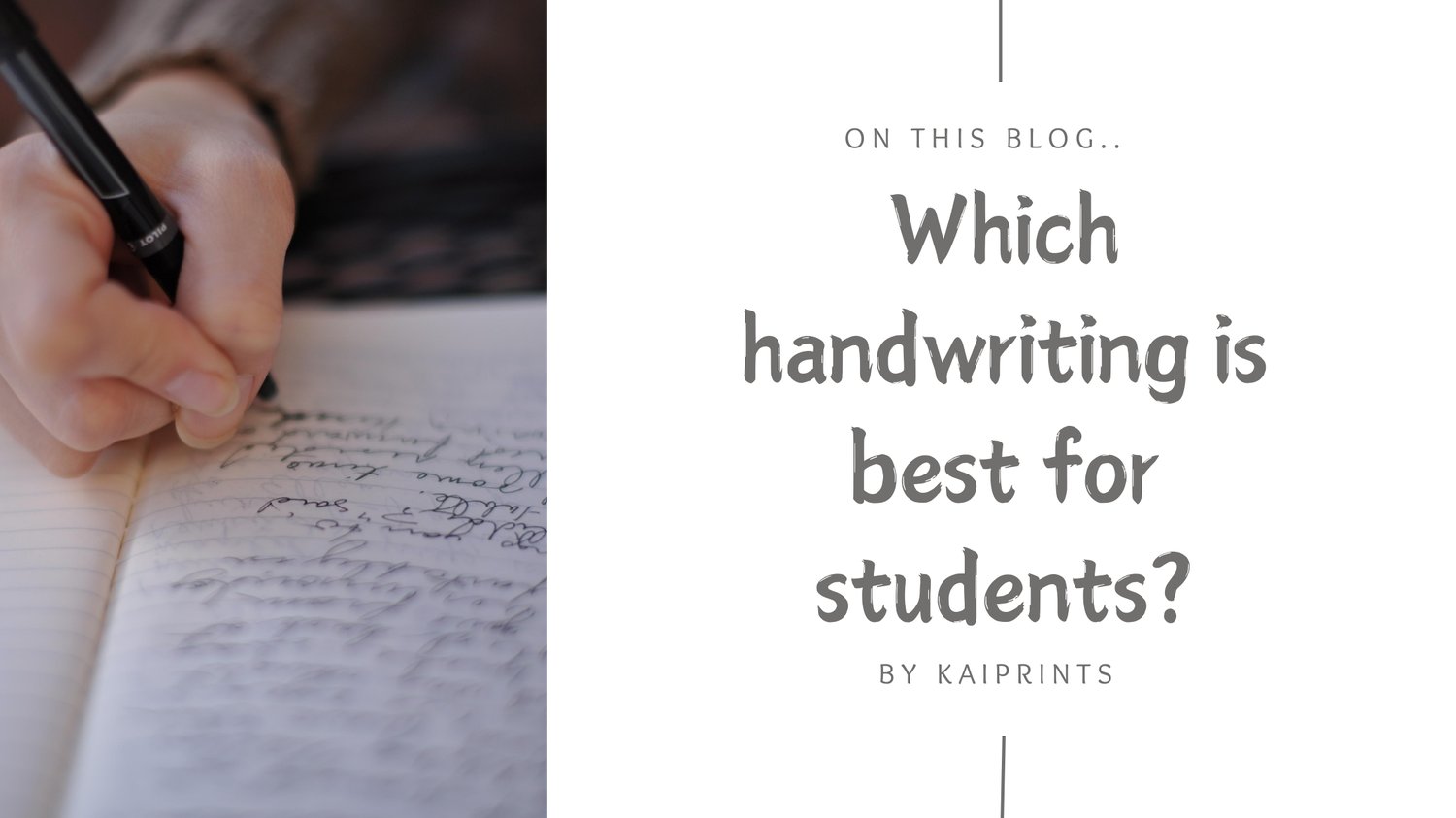Handwriting is an important skill for students. It helps them take notes, complete assignments, and express their thoughts on paper. While technology has introduced typing and digital note-taking, good handwriting still plays a key role in education. But which handwriting style is best for students? Let’s explore this in simple terms.
Types of Handwriting Styles
There are different types of handwriting styles, and each has its own benefits. Here are the most common ones:
- Print Handwriting:
Print handwriting is when letters are written separately. Each letter stands alone, like how you see text in books.
- Best for beginners: This style is often taught to young students because it’s simple and easy to learn.
- Pros: Clear and easy to read.
- Cons: It can be slower to write because you have to lift your pen after every letter.

The worksheet shown in the picture is available on our website : Neat Handwriting Worksheet
- Cursive Handwriting:
In cursive, letters are connected in a flowing manner. The pen doesn’t lift off the paper as often.
- Best for speed and style: Cursive is often taught after print because it allows for faster writing.
- Pros: Faster to write, looks elegant, and helps with muscle memory in the hands.
- Cons: Can be harder to read if not done neatly.

The worksheet shown in the picture can be found here : Cursive Handwriting Worksheet
- D’Nealian Handwriting:
This style is a mix of print and cursive. It’s often used as a transition between the two.
- Best for transitioning: Helps students move from print to cursive smoothly.
- Pros: Combines the clarity of print with the flow of cursive.
- Cons: Some students may find the slanted letters tricky at first.
- Modern Manuscript (like Handwriting Without Tears):
This style uses simple, straight letters with minimal curves. It’s designed to be easy to learn & write.
- Best for simplicity: Perfect for younger students or those struggling with complex styles.
- Pros: Simple and easy to master.
- Cons: May not look as fancy as cursive.
Factors to Consider :
The best handwriting style for students depends on a few factors:
- Age and Learning Stage:
Younger students often start with print because it’s easier to learn. As they grow older, they can transition to cursive or other styles.

- Speed vs. Clarity:
If a student needs to write quickly, cursive might be the best option. For neatness and clarity, print or a modern manuscript style is better.

Check out Print, Neat, Cursive - Handwriting Practice Sheet Bundle on our website! Perfect for practicing handwriting in different styles, whether cursive or print manuscript, this bundle offers engaging and easy-to-use worksheets. Start practicing today!
- Personal Preference:
Every student is different. Some may find cursive more comfortable, while others prefer the simplicity of print.
- School Requirements:
Some schools have specific handwriting programs they follow. It’s good to align with what’s being taught in class.
Conclusion
There’s no one-size-fits-all answer to which handwriting is best for students. It depends on their age, needs, and comfort level. Print is great for beginners, cursive works for speed, and modern styles offer simplicity. The most important thing is to choose a style that feels natural and practice regularly. With time and effort, any student can develop beautiful and legible handwriting!
Great handwriting starts with practice and patience. See you in the next blog for more tips and inspiration!
-Kaiprints

